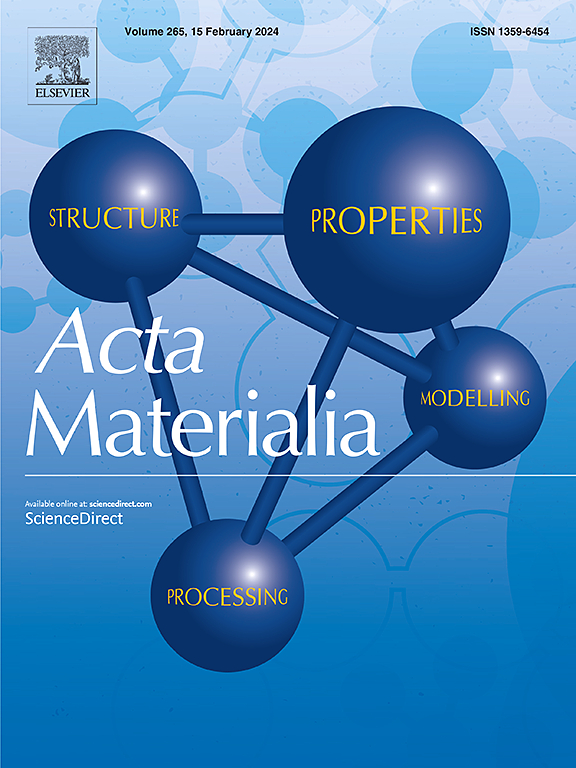硅微柱单轴压缩时的脆性和韧性变形
IF 8.3
1区 材料科学
Q1 MATERIALS SCIENCE, MULTIDISCIPLINARY
引用次数: 0
摘要
本文采用并发原子连续体(CAC)方法,对直径从50纳米到360纳米的硅柱的单轴压缩进行了多尺度研究。模拟重现了实验中观察到的硅柱的脆性和延性变形行为。对于无缺陷的硅柱,在完全光滑的平面冲床上施加排斥力以反映假定的刚性压头,对于直径为100 nm及以下的柱,位错从底表面的角形核,而对于直径为220 nm及以上的柱,位错从顶表面形核;除直径为50nm的矿柱外,所有矿柱都激活了多个滑动系统。因此,在位错成核方面显示出强烈的尺寸效应。另一个重要的发现是压头表面缺陷的关键作用。对于一个完全平坦的压头,所有直径从50 nm到360 nm的无缺陷硅柱都表现出延展性变形。相比之下,对于具有表面台阶的压头,所有直径为100nm及以上的柱都以脆性方式变形。这些表面步骤导致位错的顺序成核和两个滑移系统的激活,导致位错相交并形成无底的洛默锁。在洛默锁上持续堆积的错位导致了路口裂缝的形成。从而证明了裂缝形成的变形机制。本文章由计算机程序翻译,如有差异,请以英文原文为准。

Brittle and Ductile Deformations in Uniaxial Compression of Si Micropillars
This work presents a multiscale study of the uniaxial compression of Si pillars, with diameters ranging from 50 nm to 360 nm, using the Concurrent Atomistic-Continuum (CAC) method. The simulations reproduce the brittle and ductile deformation behaviors of Si pillars observed in experiments. For defect-free Si pillars compressed by a perfectly smooth flat punch with a repulsive force field to reflect an assumed rigid indenter, dislocations are nucleated from the corner of the bottom surface for pillars with diameters of 100 nm and below, while for pillars with diameters of 220 nm and above, dislocations nucleate from the top surface; multiple slip systems are activated in all pillars except for the pillar with a diameter of 50 nm. A strong size effect is thus demonstrated with regard to the nucleation of dislocations. Another key finding is the critical role of defects on the indenter surface. For a perfectly flat indenter, all the defect-free Si pillars with diameters ranging from 50 nm to 360 nm exhibit ductile deformation. By contrast, for an indenter with surface steps, all pillars with diameters of 100 nm and above deform in a brittle manner. These surface steps cause sequential nucleation of dislocations and activation of two slip systems, leading to dislocation intersection and formation of a sessile Lomer lock. Continued pileups of dislocations against the Lomer lock lead to the initiation of a crack at the intersection. The deformation mechanism underlying the crack formation is thus demonstrated.
求助全文
通过发布文献求助,成功后即可免费获取论文全文。
去求助
来源期刊

Acta Materialia
工程技术-材料科学:综合
CiteScore
16.10
自引率
8.50%
发文量
801
审稿时长
53 days
期刊介绍:
Acta Materialia serves as a platform for publishing full-length, original papers and commissioned overviews that contribute to a profound understanding of the correlation between the processing, structure, and properties of inorganic materials. The journal seeks papers with high impact potential or those that significantly propel the field forward. The scope includes the atomic and molecular arrangements, chemical and electronic structures, and microstructure of materials, focusing on their mechanical or functional behavior across all length scales, including nanostructures.
 求助内容:
求助内容: 应助结果提醒方式:
应助结果提醒方式:


